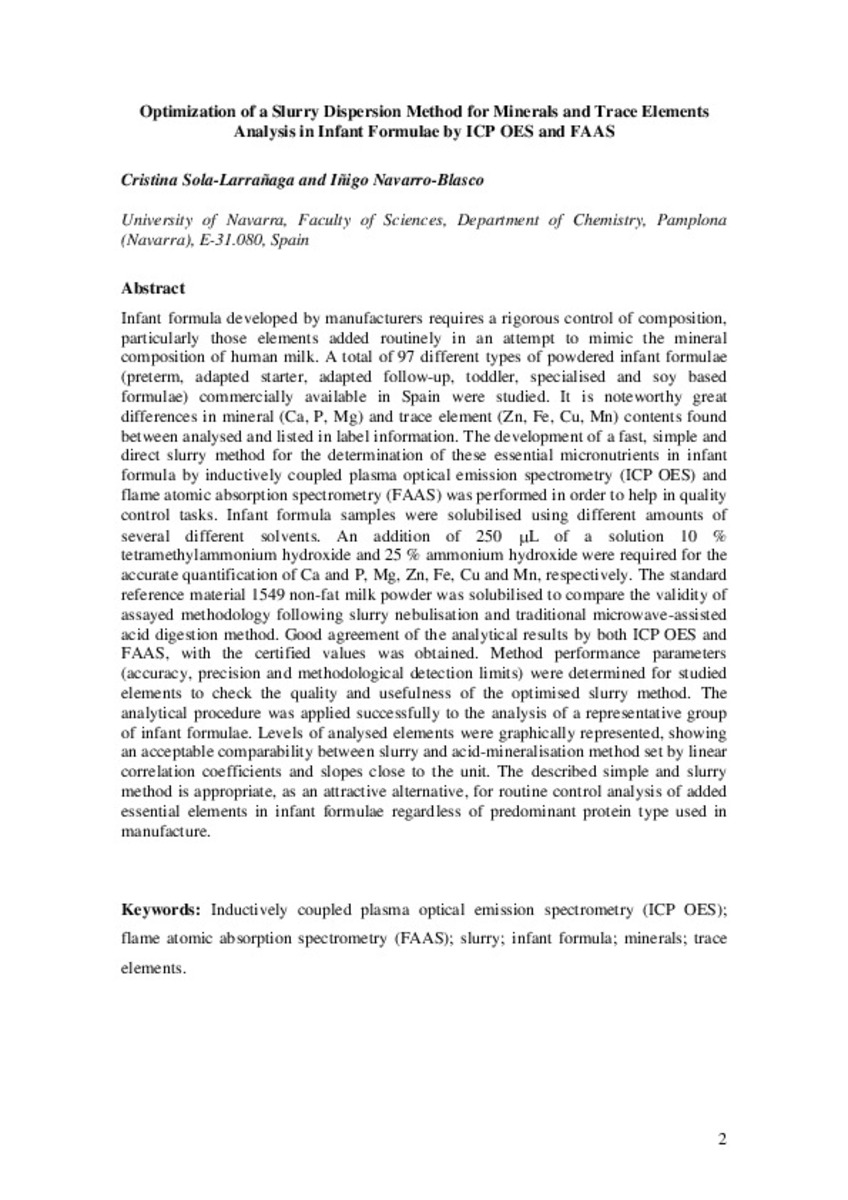Optimization of a Slurry Dispersion Method for Minerals and Trace Elements Analysis in Infant Formulae by ICP OES and FAAS
Palabras clave :
Inductively coupled plasma optical emission spectrometry (ICP OES)
Flame atomic absorption spectrometry (FAAS)
Slurry
Infant formula
Minerals
Trace elements
Fecha de publicación :
2009
Cita:
Navarro-Blasco, I. (Íñigo); Sola-Larrañaga, C. (Cristina). "Optimization of a Slurry Dispersion Method for Minerals and Trace Elements Analysis in Infant Formulae by ICP OES and FAAS". Food Chemistryt; 2009,115(3):1048-1055.
Aparece en las colecciones:
Estadísticas e impacto
0 citas en

0 citas en

Los ítems de Dadun están protegidos por copyright, con todos los derechos reservados, a menos que se indique lo contrario.











